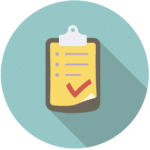INDUSTRIAL | RESEARCH | TEACHING | MEDICAL
The Process of
Procurement AQUISITIONS
lab solutions without compromise
The Process of Procurement: How to Effectively Execute Acquisitions
While the process of procurement may seem simple, it’s paved with stages and levels that require dextrous navigation, constant analysis and frequent monitoring throughout. Rather than simply locating the necessary goods, paying for them, receiving said goods and documenting the transaction, the process is one that’s constantly evolving.
As such, there is no one-size-fits-all approach to the procurement process; it can be entirely dependent on the organisation. Those on the more formal side will opt for a process in line with their values and one which complies with strict guidelines, while other organisations may pursue different approaches
Here, we offer guidance on how to approach the procurement process, as well as tips and advice on how to effectively navigate the acquisition of products in an effective manner.
HOW DOES PROCUREMENT WORK?
Procurement and its associated processes require a substantial portion of a company’s resource to manage. Procurement budgets tend to provide managers with a specific value they can spend in order to procure the goods or services they need. These budgets place procurement at the centre of a company’s strategy since the ability to purchase certain materials or services can determine if operations will be profitable.
In a lot of cases, procurement processes will be dictated by company standards, which themselves come for the accounts payable division of accounting. As such, the procurement process includes the preparation of a demand as well as the end receipt and approval of payment.
As a result, many large companies may require support from a few different areas of a company for successful procurement.
Identify your needs

Explore and select vendors

Submit the purchase requisition

Create purchase order

It differs from vendor to vendor, but the purchase order tends to include the name of your company, the description and quantity of the goods or services, along with the price, a mailing address, payment information and terms, invoice address and a purchase order number.
Pay for goods of services

Record maintenance

Receive invoice and order

Depending on your vendor, you may or may not receive these at the same time. Either way, the vendor will send over an invoice to the purchaser which describes exactly what the order includes. It will confirm the sale and re-affirm when your payment is due.
Upon receiving the order, you’ll usually have a small window of time to let the vendor know of any issues with the product or service. In the event of discrepancies, you’ll have to reconcile your purchase order, order receipt and vendor invoice to double-check that what you are being charged matches what you have received.
WHAT ARE SOME PROCUREMENT BEST PRACTICES?
Assemble the right team
Before you start the process of procurement, consider who in your workforce you will need to best accomplish what needs to be done. The ideal team not only requires people involved with finance, sales & marketing, and operations, but strong communication and quick thinking to boot.
Communicate what you are doing
When contacting vendors, be transparent about what it is you want from the process. Detail your marketing strategy if necessary, and communicate with them as people from the moment you first contact them. Additionally, this practical approach cuts down on the amount of time-draining administrative emails that can get in the way of the process.
People first, purchase second
Further to the above, if you have the right team in place, then they’ll know the importance of valuing the vendor as people, and not just a place to purchase from. Emphasise the soft skills within your team as this is where they’ll really shine at the procurement stage. Ideally, you’ll be forming a relationship with the vendor, which can take time, so it’s worth including in your team the people who are approachable, adaptable and used to maintaining strong bonds with customers and clients.
Use risk management to your advantage
There’s more to the purchase beyond recording maintenance at the end of the process. You and your team have to ensure safeguards are in place so that your organisation can thrive, its procurement function has a sound reputation and its operations are simplified. What can you do to minimise risk in order to protect the company?
Collect spend data
Among the most powerful tool that buyers have, spend data lets buyers know what they’re buying, who they’re buying from and how often – letting them find the best savings as a result.
Put value above cost savings
Those unfamiliar with the procurement process might think that cost savings are the most important part of it. While cost is significant, value tends to be more important. It’s worth educating those not involved with the process with the ins and outs of value, and why it often exceeds the importance of financial benefits in the process.




